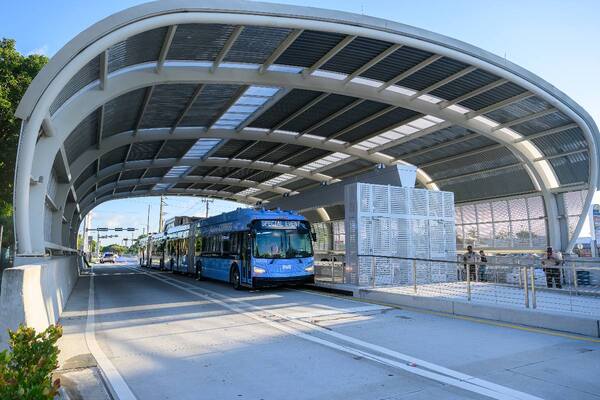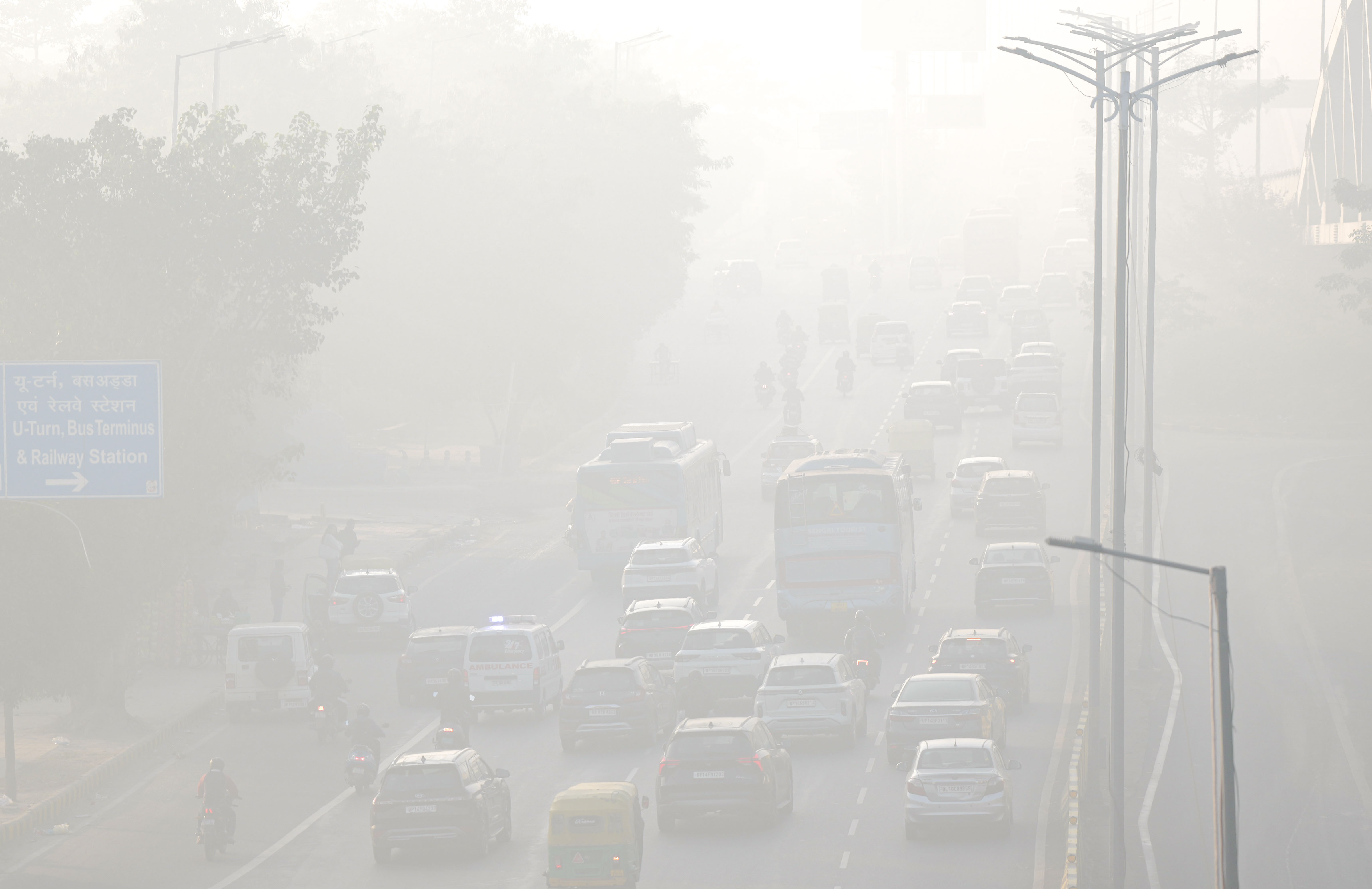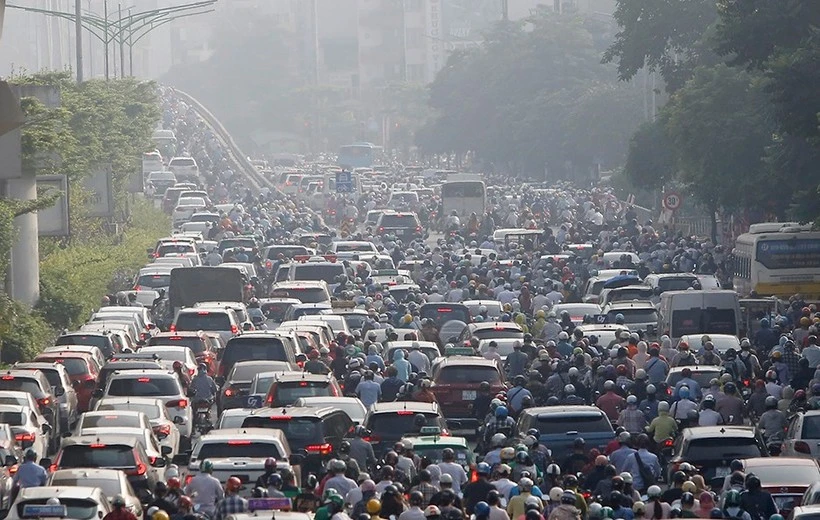Road travel – Miami-Dade County launches electric bus rapid transit service – Smart Cities World

Project Overview: Miami-Dade County’s Metro Express
Executive Summary
Miami-Dade County has inaugurated the Metro Express, a significant public transportation initiative aligned with its Smart Programme. This project represents a substantial investment in sustainable urban infrastructure, directly contributing to several United Nations Sustainable Development Goals (SDGs). The 20-mile, battery-electric Bus Rapid Transit (BRT) system is the longest of its kind in the nation and serves as a critical component in the county’s strategy for sustainable urban development.
Key Project Details
- Corridor Name: Metro Express
- System Type: Battery-Electric Bus Rapid Transit (BRT)
- Corridor Length: 20 miles along the South Dade Transit Way
- Route: Connects Florida City to Dadeland South
- Infrastructure: Features 14 newly established stations
- Strategic Initiative: The inaugural corridor of the Miami-Dade County Smart Programme
Contribution to Sustainable Development Goals (SDGs)
SDG 11: Sustainable Cities and Communities
The Metro Express project is a direct implementation of targets within SDG 11, which aims to make cities and human settlements inclusive, safe, resilient, and sustainable.
- Target 11.2 (Affordable and Sustainable Transport Systems): The BRT line provides a safe, affordable, accessible, and sustainable transport option for residents, improving access to services and employment while reducing reliance on private vehicles.
- Target 11.a (Integrated Urban Planning): As the first corridor in the county’s Smart Programme, the project exemplifies integrated planning that links transportation infrastructure with broader urban development strategies.
SDG 13 & SDG 7: Climate Action and Affordable and Clean Energy
The technological foundation of the Metro Express system supports global efforts to combat climate change and transition to clean energy sources.
- Climate Mitigation (SDG 13): By utilizing a fully battery-electric fleet, the system significantly reduces greenhouse gas emissions and local air pollutants compared to conventional diesel-powered transit, contributing directly to climate action.
- Clean Energy Transition (SDG 7): The project promotes the use of clean energy in the public transport sector, aligning with the goal of increasing the share of renewable and clean energy in the global energy mix.
SDG 9: Industry, Innovation, and Infrastructure
The development of the Metro Express line showcases innovation in building resilient and sustainable infrastructure.
- Target 9.1 (Sustainable and Resilient Infrastructure): The project develops quality, reliable, and sustainable regional infrastructure to support economic development and human well-being.
- Target 9.4 (Upgrade Infrastructure and Retrofit Industries): The adoption of battery-electric technology represents an upgrade to public transit infrastructure, making it cleaner and more resource-efficient.
Analysis of Sustainable Development Goals (SDGs) in the Article
1. Which SDGs are addressed or connected to the issues highlighted in the article?
-
SDG 11: Sustainable Cities and Communities
- The article focuses on the launch of the Metro Express, a Bus Rapid Transit (BRT) line in Miami-Dade County. This is a core component of urban infrastructure aimed at creating more sustainable and accessible cities by providing public transportation options.
-
SDG 9: Industry, Innovation and Infrastructure
- The development of a 20-mile transit corridor with 14 stations represents a significant investment in new, sustainable infrastructure. The project being part of a “Smart Programme” highlights the innovation aspect of this goal.
-
SDG 13: Climate Action
- The article explicitly states that the Metro Express is a “battery-electric BRT line.” This choice of technology directly addresses climate change by providing a transportation alternative that reduces reliance on fossil fuels and lowers greenhouse gas emissions compared to traditional buses or private vehicles.
-
SDG 7: Affordable and Clean Energy
- By utilizing battery-electric technology, the project promotes the use of clean energy in the public transport sector. Electric vehicles are more energy-efficient than internal combustion engines, contributing to the broader goal of improving energy efficiency.
2. What specific targets under those SDGs can be identified based on the article’s content?
-
Target 11.2: Provide access to safe, affordable, accessible and sustainable transport systems for all.
- The article describes the creation of a new 20-mile public transport line connecting Florida City to Dadeland South. This directly contributes to the expansion of public transport, which is the primary aim of this target. The system is described as “battery-electric,” which aligns with the “sustainable transport systems” component.
-
Target 9.1: Develop quality, reliable, sustainable and resilient infrastructure.
- The Metro Express line is a new piece of public infrastructure. Its description as “battery-electric” and part of a “Smart Programme” points towards the development of modern and sustainable infrastructure designed to serve the community.
-
Target 13.2: Integrate climate change measures into national policies, strategies and planning.
- The decision to make the new BRT line “battery-electric” as part of the county’s “Smart Programme” is a clear example of integrating climate change mitigation measures (reducing transport emissions) into local and regional urban planning and strategy.
3. Are there any indicators mentioned or implied in the article that can be used to measure progress towards the identified targets?
-
Implied Indicator for Target 11.2 (related to official indicator 11.2.1: Proportion of population that has convenient access to public transport).
- The article provides specific details that can be used to measure this. The creation of a “20-mile” line with “14 stations” connecting specific areas (“Florida City to Dadeland South”) directly implies an increase in the population’s access to public transport along this corridor.
-
Implied Indicator for Target 9.1 (related to official indicator 9.1.2: Passenger and freight volumes, by mode of transport).
- While not stating a number, the launch of a major new public transit line implies that a key metric for its success will be the volume of passengers it serves. This would be a direct measure of the infrastructure’s use and impact.
-
Implied Indicator for SDG 13 (related to greenhouse gas emissions).
- The specific mention of the system being “battery-electric” implies that a key performance indicator for this project is the reduction of greenhouse gas emissions compared to a diesel-powered alternative or the equivalent number of private car journeys. The choice of this technology is a deliberate action to achieve a measurable climate benefit.
Summary Table of SDGs, Targets, and Indicators
| SDGs | Targets | Indicators (Mentioned or Implied in Article) |
|---|---|---|
| SDG 11: Sustainable Cities and Communities | Target 11.2: Provide access to safe, affordable, accessible and sustainable transport systems for all. | The length of the new transport line (20 miles) and the number of new stations (14) imply an increase in the proportion of the population with access to public transport. |
| SDG 9: Industry, Innovation and Infrastructure | Target 9.1: Develop quality, reliable, sustainable and resilient infrastructure. | The creation of a new transit corridor implies future measurement of passenger volumes as an indicator of the infrastructure’s utility. |
| SDG 13: Climate Action | Target 13.2: Integrate climate change measures into national policies, strategies and planning. | The system being “battery-electric” implies a focus on reducing greenhouse gas emissions from the transport sector as a key performance indicator. |
| SDG 7: Affordable and Clean Energy | (No specific target clearly identified) | The use of “battery-electric” technology implies a shift towards cleaner energy sources and improved energy efficiency in public transport. |
Source: smartcitiesworld.net
What is Your Reaction?
 Like
0
Like
0
 Dislike
0
Dislike
0
 Love
0
Love
0
 Funny
0
Funny
0
 Angry
0
Angry
0
 Sad
0
Sad
0
 Wow
0
Wow
0
















































:focal(1500,1000)/https://media.globalcitizen.org/a6/9a/a69a4720-d8a1-4715-b596-18738d03c05c/rotary_polio_hero_image.jpg?#)







/countries/sri-lanka/photo-credit---dmc-sri-lanka.tmb-1200v.jpg?sfvrsn=dc298bcc_1#)


















